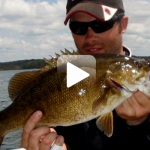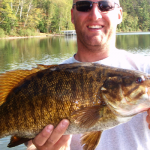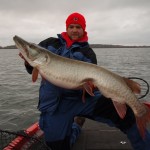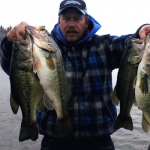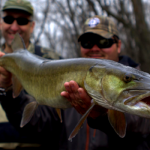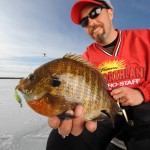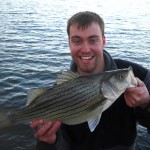By: Kenny Lookingbill – Date Posted: March 22, 2011
Regardless of what many people say, lipless crankbaits will have their shining moments at any point of the season. On occasion, I hear of some folks complain of how it’s an “idiot bait”, a technique that requires extremely long casts and quick retrieves that enables you to catch easy fish by covering water.
Unlike some folks, I beg to differ. Lipless crankbaits play a huge role in my early season fishing.
During the end of March last year, I experienced a bitterly cold day of fishing. A dusting of snowfall was covering the ground as a result of an overnight front that came in. To make the situation seem even worse, air temperatures were about 20 degrees below seasonal average, and water temperatures were barely breaking 30 degrees, all because of this massive cold front.
On this particular early spring day, I had nothing but fishing scheduled in my plans for the late afternoon.
My fishing partner and I decided to head over to the small lake in town. This particular place had been worthwhile for us during the previous weeks since ice-out. Our plan was to fish a weedy flat near the main channel. I decided to approach this day a little differently than a lot of people would approach a postfrontal outing. Most people would fish VERY slowly. I, on the other hand, wanted to cover water and find a couple of aggressive fish because I didn’t have a large amount of time to fish it thoroughly.
As we began fishing, I was immediately regretting my decision coming here. During the first ten minutes of uncomfortable casting, my hands were freezing from palming my Quantum Tour Edition TE1160 PT bait-casting reel.
Skeptical of our efforts, and my lack of success while fishing during post-frontal conditions, I had a feeling that we were going to catch nothing, and our day of trying to fish would be a waste of time.
Following our half an hour of futility, I was in the process of suggesting to my partner that we conclude this outing sometime soon. Then suddenly, my fortunes changed and all hell broke loose for us.
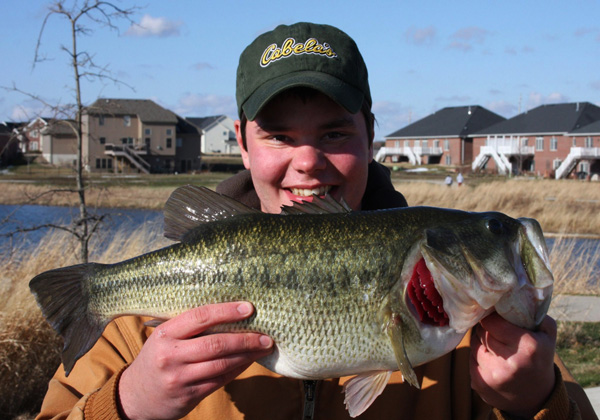
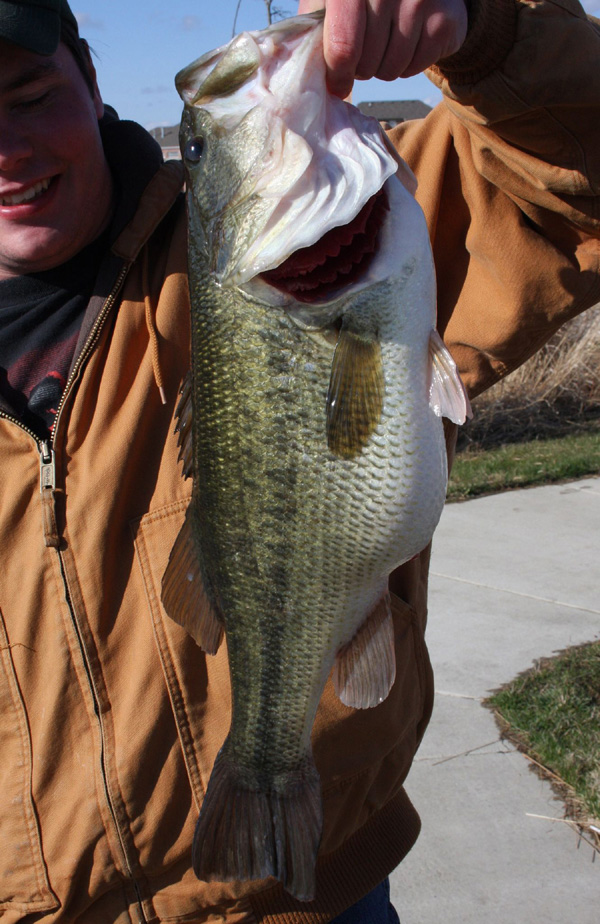
Out of nowhere I encountered a subtle bump on my Yo Zuri Rattlin’ Vibe. This completely caught my off guard. I set the hook and sure enough I had a fish on. I immediately knew it was a “biggun” because of its weight. When it was played in and lipped, I was in shock. I knew right away that it was the biggest bass of my life.
Final measurements were taken. The big bass was 23 inches, and estimated to be around 7 lbs. Pictures were taken and the fish was released to fight another day. After this fish, we continued to fish, but could not entice anything else. Victimized by the cold, and my lucky catch, we retired as happy anglers for the day.
This forever would cement my confidence in fishing with lipless crankbaits during cold weather periods and post-frontal conditions.
Quite often, I get asked the following question by inquiring anglers; “What is the reason behind bass aggressively attacking rattle baits?”
When females are nesting and preparing to spawn, anything that intrudes their nest will be aggressively attacked. It’s in the nature of almost all egg-laden fish species. The fish may not necessarily be hitting out of hunger, but more out of a reactionary parental instinct because of the objective is to protect their nest.
Any strike like this, that isn’t influenced by hunger, is called a reaction strike. There are many ways to trigger reaction strikes at any time of the year. Examples are bouncing crankbaits off structure such as rocks and wood. In addition, varying your speeds of retrieve also lead to a plethora of strikes.
When fishing lipless crankbaits, I tend to use a variety of retrieves. My preference is burning them, with the combination of giving them erratic jerks and pauses. Many times I have gotten a strike following a pause on the first crank of the reel.

Plan-B Options
Besides rattle baits, there are other fine lure selections that can be used in the springtime, most notably jig & pigs, and jerkbaits. These often serve as my backup plan if lipless crankbaits aren’t on the fishes menu.
Jig & pigs are most effective for me during the first few weeks of spring, immediately after ice out.
The bass at this time are in the process of working their way out of their winter doldrums. During their sluggish movements, it is imperative that a slow approach be used. Early in the season, I prefer using red or brown colored jigs with craw trailers because one of the first main forages of a bass is crayfish. Hopping a jig along the bottom at a very slow pace will replicate a crayfish crawling on the bottom. I prefer using downsized versions such as Strike Kings Bitsy Bugs and Booyah Baby Boo jigs.
In addition to the much slower fishing presentations dictated by the jig and pig, jerkbaits also prove their effectiveness during slow days of fishing.
As the spring season progresses towards a warmer summer, jerkbaits are an excellent option for post-frontal conditions and especially in situations when the fish are flat-out active. The key to fishing jerkbaits at this time of year is to keep the retrieve slow and deliberate. The retrieves should consist of erratic jerks and very long pauses, sometimes even a ten second count is necessary between any continued movements.
My favorite jerkbaits include Storm Thundersticks and the Rapala X-Rap 8 and 10. Color choices are not all that important to me. Just remember the basic color rules in respect to water clarity, like using darker colored lures in murky water, and so forth.
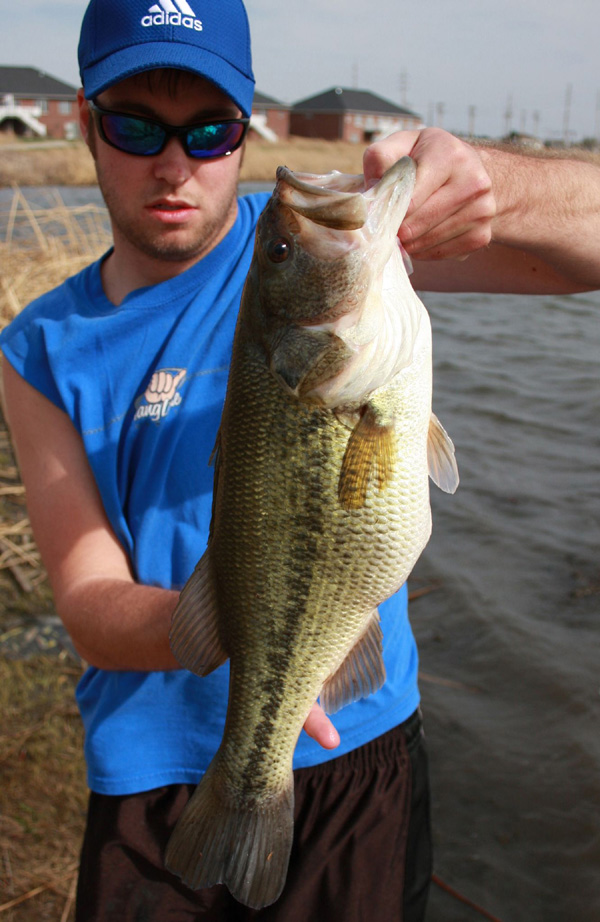
Trap Attack
Due to the power fishing mentality that I have, I will always remain sensitive to the lipless crankbait because I enjoy its fast paced fishing, and rapid casting mode.
As opposed to other methods that work well during early season situations, I enjoy fishing with lipless crankbaits in particular because you can cover a lot more water, present your lure in diverse casting angles, and can quickly find more fish and get them to strike out of annoyance of the rattling lure.
Through my experiences of early season fishing, the prime water temperatures for fishing with lipless crankbaits are between 45-55 degrees.
I usually begin the season first by targeting smaller bodies of water such small lakes and ponds, or places that receive a lot of overland and tile drainage because these are the places that warm up the quickest. In addition, I also focus often on areas such as northern most shorelines that are baked by direct sunlight.
On any body of water, whether on ponds or big lakes, the general rule of thumb is to find shallower water adjacent to deeper water where the females will come out of to begin the spawning process. They will often be sunning in shallow water or by other structures that attract heat. These areas, specifically, can include rocks, wood debris, emerging weedgrowth, and sand.
As far as color choices are concerned, I like to keep most lipless crank selections limited to any sort of red or orange color. The reasoning for this is that one of the main early season forages of bass is crayfish, as they are abundant, and get set to spawn themselves. In addition to the reds and oranges, a lot of other color options work well such as firetiger. Also worth noting is that if fishing in clear water situations, it is important to match the hatch and pay attention to the patterns of the available pelagic forage species.
When fishing with lipless crankbaits, or making your selections on which brands, models, and styles to use, the most important factor is determining how noisy and effective the internal rattles are. My rule is the louder the vibration, the better.
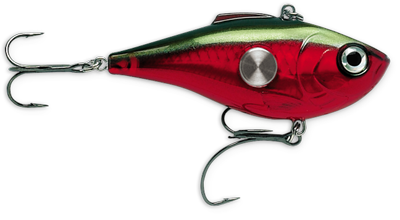
Many of these lipless crankbaits are expensive for their designs and styles. However, they are definitely worth using. My favorites include the Yo Zuri Rattlin’ Vibes and the Spro Aruku Shads. Besides these two, other cost-effective options are available, and these work just as well. Some examples are the following: Bill Lewis Rattletraps; Strike King Redeye Shads; and Cotton Cordell Super Spots.

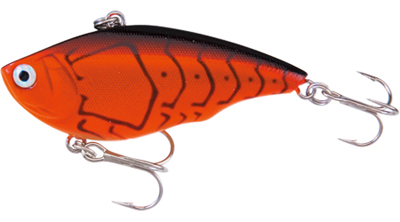
To fish effectively with rattle baits, I use the Quantum Tour Edition TE1160 line of reels with the 6.3:1 gear ratio. The mid-range gear ratio seems to work best for me because I do not want to move the rattletrap too fast. That is my overall preference, but sometimes a faster gear ratio greater than 7.0:1 such as the blazing fast Quantum Tour TKVD150HPT is required if you really want to make the lure move and get the fish to bite when nothing else can.
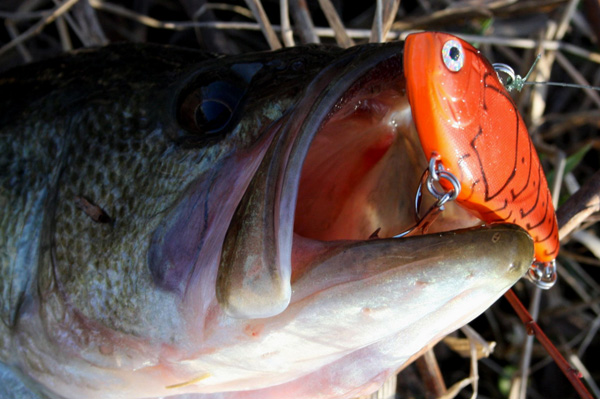
As far as rod lengths and actions are concerned for fishing with rattle baits, most anglers prefer using medium to medium-heavy action rods. I prefer using a 7 foot medium heavy rod for this type of fishing so that I can make long casts. In addition, the long rods help for stronger hook sets I as get to the backbone of the rod quicker. It helps to have as strong as a rod possible to bring in the big female bass that are full of energy from heavy feeding to meet the energy requirements for spawning.
For any rattle bait rod and reel combo, I like to use 30 lb. braided superline such as Power Pro, Spiderwire Stealth, or Sufix Fusion. These superlines enable anglers to make long, smooth casts and gives more leverage when fighting fish and not having to worry about a break off. Besides braided line options, copolymers and 10lb fluorocarbon will work when needed.
Like a number of anglers who began fishing with lipless crankbaits, I was skeptical of the benefits that can be had from triggering reaction strikes. After long hours of trial and error, I progressively gained confidence in them and feel as if I can catch fish no matter the situations being presented.
During your early season big bass hunts, keep angler ethics a high priority. Practice catch, photo, and release on those big females to ensure they can be back in the water, guarding their eggs from nest raiders.



